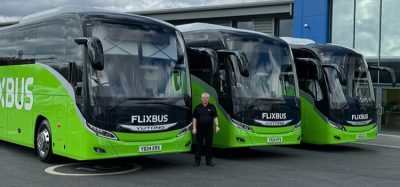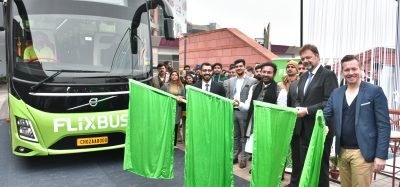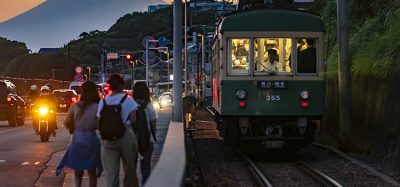Driverless in Amsterdam
- Like
- Digg
- Del
- Tumblr
- VKontakte
- Buffer
- Love This
- Odnoklassniki
- Meneame
- Blogger
- Amazon
- Yahoo Mail
- Gmail
- AOL
- Newsvine
- HackerNews
- Evernote
- MySpace
- Mail.ru
- Viadeo
- Line
- Comments
- Yummly
- SMS
- Viber
- Telegram
- Subscribe
- Skype
- Facebook Messenger
- Kakao
- LiveJournal
- Yammer
- Edgar
- Fintel
- Mix
- Instapaper
- Copy Link
Posted: 13 February 2017 | 2getthere | No comments yet
2getthere explores the potential integration of infrastructure and city development in Amsterdam via a multimodal transport hub and discovers how driverless vehicles can add value to the area.
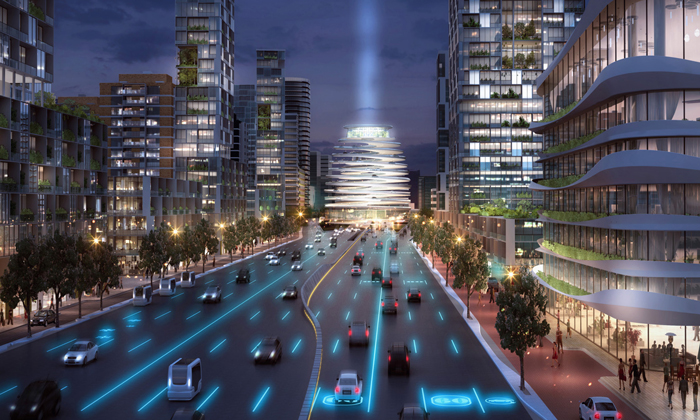

Credit: 2getthere
Commissioned by The Royal Institute of Dutch Architects (BNA), a multidisciplinary team consisting of UNStudio (architects/urban designers), Goudappel Coffeng (mobility consultants), Geophy (data specialists) and 2getthere (innovative mobility systems developers) has collaborated on a study that examines the future potential of the integration of infrastructure and city development around the area of Amsterdam’s A10 ring road and the Lelylaan area. 2getthere focused specifically on if and how driverless vehicles can add value to the area.
Essential question
Currently the A10 ring road in Amsterdam forms a barrier that inhibits the connection between the inner and outer parts of the city and renders its immediate surroundings both uninhabitable and unused. As population growth has propelled development further outward from the city centre and along the ring road, an opportunity was identified to integrate the highway and the city in a way that generates new forms of living and improves mobility for future inhabitants.
The result of the study formulates solutions that reconcile the disparate nature of the highway and the city through the injection of new programs and amenities, alongside improved accessibility, to make the A10 and its surrounding neighbourhoods a desirable destination with a positive presence in the city.
Envisioning how future mobility and urban development can be successfully integrated requires a new toolbox with which the building blocks of the city of tomorrow can be built. The goal of the proposal is twofold: a proposition for a new multimodal transport hub located on the intersection between Cornelis Lelyaan and the A10, and new urban developments on both sides of the A10 that link the adjacent neighbourhoods and create a unique new address in Amsterdam.
The Hub
The Hub, a new mixed-use destination, offers a smooth mobility connection that will allow users to transition between private cars and public transport; from cars which run on petrol to electric mobility; from driving to walking and cycling. Offering parking, restaurants and retail, the Hub also includes a stop for the CityPods, a new alternative to mass-public transport. The Hub also features a charging station for electric mobility and, through the use of locally stored car batteries, will function as an energy supply center in peak hours for the surrounding neighborhoods.
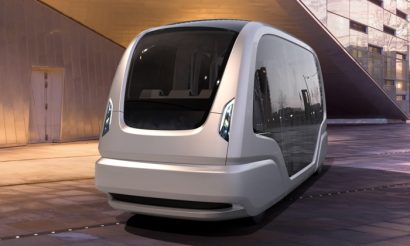

Credit: 2getthere
2getthere’s automated vehicles provide mobility to the city center of Amsterdam in approximately 10 minutes. Through a redesign of the spatial planning, the system can operate using the current roads. The complexity of realising automated transit and sharing existing roads is based on 4 complexity factors: speed, intersections, access and behaviour. By gaining (a degree of) control over these factors, a connection can be created that provides both safety and throughput – two basic requirements for any public transit application to be a success. To date such application has not been realised yet; temporary demonstrations have shown the potential of automated transit, but have been limited in speed and availability as they haven’t been able to operate during adverse weather conditions, including rain. 2getthere’s technology is actually not hindered by weather conditions and has an excellent availability record, allowing real life applications to be realised today.
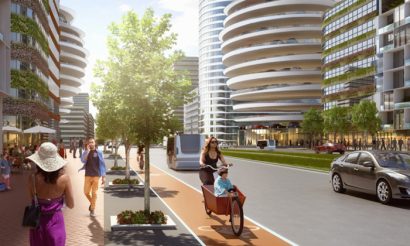

The Hub (Credit: 2getthere)
“Sharing of transit is crucial to improve the sustainability and liveability of a city. Shared use, electrification and autonomous operation are converging trends, with the benefits of one becoming synonymous with the others. Shared transit, or public transit if you will, is a requirement to reduce the number of vehicles in an area,” states Robbert Lohmann, COO 2getthere. In the case of the Amsterdam Lelylaan, the system can transport 1000 persons per hour per direction, with one vehicle departing approximately every 75 seconds.
In addition to the development of the Hub and the connecting transit systems, the study has also considered the main highway A10, introducing flexibility in the flexibility in the direction of travel of the lanes. This also allows using the existing space smarter depending on the time of day. By introducing housing and offices close to the ring, the A10 will no longer be a barrier between the city centre and its suburbs. The Hub is in the middle of all this, with all modalities converging and allowing for easy transfers, amongst other to the driverless vehicles of 2getthere.
Related topics
Connected & Autonomous Vehicles, Fleet Management & Maintenance, Multimodality, Ticketing & Payments
Related cities
The Netherlands





